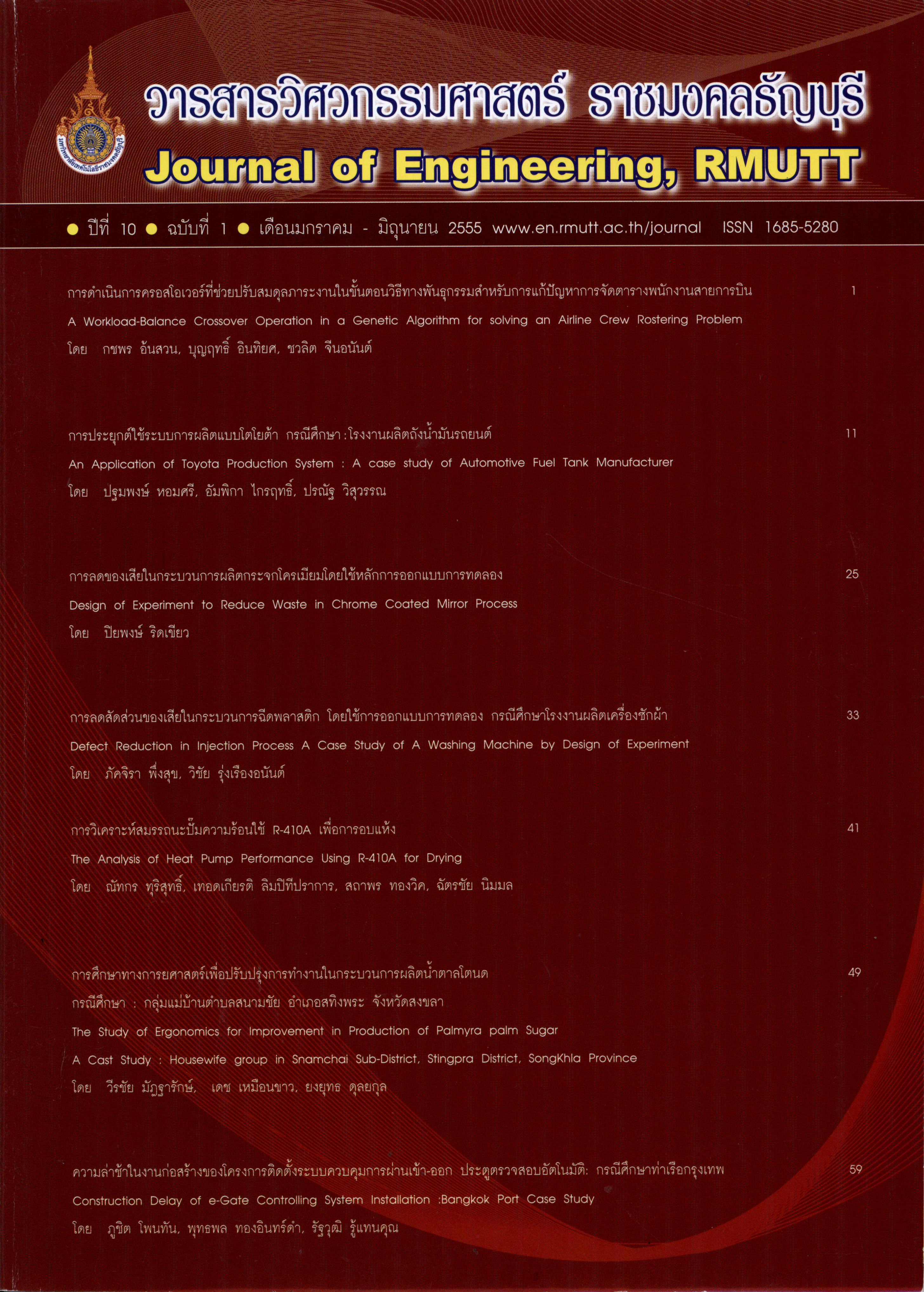An Application of Toyota Production System: A case study of Automotive Fuel Tank Manufacturer
Main Article Content
Abstract
The main objective of this research is to apply the concept of Toyota Production Systems to improve the automotive fuel tank process in order to eliminating wastes in the manufacturing process and increasing production efficiency, reducing delivery lead time to customer and reducing work space and work-in-process. Many Techniques include standard work, process analysis and production line balancing was implemented to reduce current cycle time to be less than Takt time and to eliminate wastes. The Kanban System was also used to produce parts on time. In addition, improving working area was made to be visually controllable. The results show that increasing the number of tanks assembly process per hour by up to 18.31 %, reducing number of operators by 11.11%, reducing the finished goods inventory by 17.68%, reducing the quantity of work-in-process and lot size by 14.48%. Components and finished goods
storage space is reduced by up to 328.81 square meters or 34% and production lead time could be reduced by 86.17% with overall cost saving of factory amounting to approximately 36,008,727.82 Baht per year.
Article Details
The manuscript, information, content, picture and so forth which were published on Frontiers in engineering innovation research has been a copyright of this journal only. There is not allow anyone or any organize to duplicate all content or some document for unethical publication.
References
พระบรมราชูปถัมภ์แห่งประเทศไทย,กรุงเทพฯ,หน้า 1.
[2] มังกร โรจน์ประภากร. 25ร3. การปรับปรุงเลย์เอาต์ โรงงาน.สำนักพิมพ์สมาคมส่งเสริมเทคโนโลยี(ไทย-
ญี่ปุ่น), กรุงเทพฯ หน้า 17-18, 206 - 213.
[3] เตือนใจ สมบูรวิวัฒน์ และ ควงพรรณ กริชชาญชัย.2552.กระบวนการทางธุรกิจเพื่อการจัดการโซ่อุปทาน
และโลจิสติกส์.สำนักพิมพ์สุเนตรการพิมพ์,กรุงเทพฯ หน้า 99-104.
[4] Jeffrey, K. Linker and David Meier. 2006. The Toyota Way Fieldbook, McGraw-Hill, United Star of America.
[5] สำเร็จเกษยาและ บุญเรื่องตันไถง. 2552. การประยุกต์ใช้ระบบการผลิตเบบลื่นเพื่อการปรับปรุงกระบวน
การผลิตกรณีศึกษาโรงงานชิ้นส่วนระบบส่งกำลังการประชุมวิชาการทางวิศวกรรมศาสตร์มหาวิทยาลัยสงขลานครินทร์, ครั้งที่ 7, ประเทศไทย, 21-22,พฤษภาคม 2553: 439-444.
[6] ศรายุทรวัยวุฒิและคณะ. 2554. รายงานผลการปฏิบัติงานกิจกรรมให้คำปรึกษาแนะนำเชิงลึกเทคโนโลยี
สะอาดเละเทคโนโลยีสีเขียวในอุตสาหกรรมเป้าหมาย(บริษัท เอส เค อินเตอร์ ฟู๊ด จำกัด). หน้า 64-66


